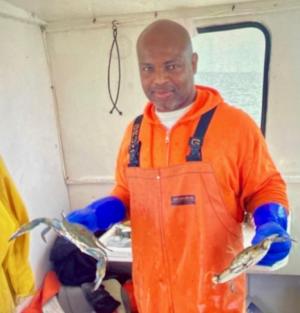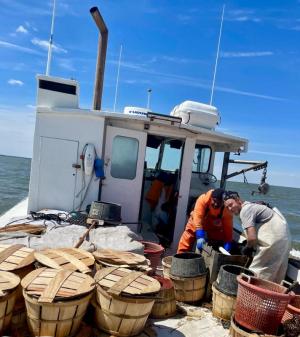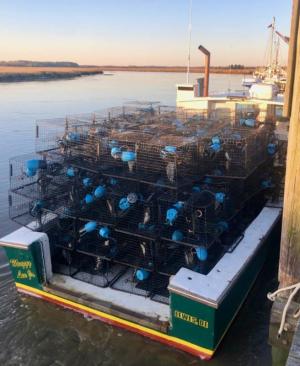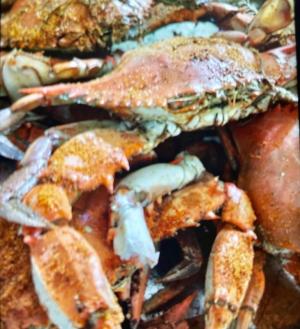Tale of two ped, cycling crossings and scarce crabs
People who live along Camp Arrowhead Road in the Angola area are fired up over a new pedestrian crossing installed by Delaware’s Department of Transportation several months ago. Connecting two sides of a new development that straddles the road, the crossing is near the dangerous and sometimes fatal S-curve on that road. People can't understand how what they consider as a blatantly unsafe crossing like that gets built in the first place.
This in a state scrambling to make its roads and trails safer for pedestrians and bicyclists. Efforts are underway to have the crossing removed or relocated to a safer place with better visibility and sight lines.
Meanwhile DelDOT is completing improvements along the Rehoboth Avenue entrance to Rehoboth Beach that is addressing one of the most dangerous bicycling areas in the state. A new connection has been paved between the end of the Junction and Breakwater Trail on Church Street and Rehoboth Avenue just before the drawbridge there. That connection now feeds into a new, two-way bicycle lane on the north side of the avenue that is separated from the vehicle travel lanes by a line of flexible and highly visible knee-high posts.
The new two-way lanes replace a narrow, single bicycle lane that put outbound cyclists in dangerous proximity to heavy outbound traffic for many years. It has been the scene of a number of serious crashes and injuries since bicycle activity skyrocketed in the area after the opening of the Junction and Breakwater and Gordons Pond trails.
The new lanes and physical separation are a huge improvement and leap forward for safety.
Crabs valuable but scarce
With Memorial Day weekend just a week away and the coronavirus pandemic easing its grip in the U.S., people are looking forward to getting together again.
For many, that means sitting around a table spread with layers of newspapers and mounds of spicy steamed blue crabs. A summer ritual: cracking the crabs with knives and hammers, pulling out pieces of sweet, white meat and sending them down the hatch with cold beer, iced tea and sodas.
But, says Kay Copp of Copp’s Seafood, early season crabs are scarce and high this year. “That's just the way it’s going to be for a while. Right now we’re getting $60 for a dozen, if we have them to sell. They’re coming from Maryland and Delaware.”
According to Delaware Department of Natural Resources and Environmental Control spokesman Mike Globetti, blue crabs are by far the most valuable commercial fishery in Delaware. “In 2017, blue crabs constituted approximately 62 percent of total landings by weight and 75 percent of the value of all species landed in Delaware waters,” said Globetti. “There are 230 commercial shellfish license holders in Delaware, most of whom have crab licenses. The 2020 landings of blue crab was around 4 million pounds.”
That makes for a lot of crab cakes and crab dip.
Shawn Moore, a local waterman who crabs and conchs, started potting for crabs up the Delaware Bay, out of Bowers Beach, when the season opened April 1. “Up until about now that’s primarily a sook season,” said Moore. Sooks are mature female crabs valued for the sweetness of their meat and the thousands of eggs they carry inside. They’re sold to urban Asian markets in East Coast cities, as far north as Canada.
“When the sooks start sponging up, we quit crabbing for a while. It’s illegal to take and sell sponge crabs. That helps protect the fishery for the future.” Sponge crabs are females whose eggs push open the bell-shaped aprons on their undersides, creating the bright orange sponge that denotes this stage of their lives. Those sponges will eventually be released as future generations of tiny little crabs that will grow to market size over a roughly two-year period.
“They started sponging up about a week ago so I’ve taken up all my pots for now,” said Moore. “There was an OK sook season, according to what I hear. But it wasn’t on fire as in a number of years past.”
Moore’s licenses allow him to fish up to 400 pots which he baits with menhaden, known popularly as bunker. He’s looking forward to setting his pots again, probably after July when male crabs figure to be running stronger. “Last year was really good from midsummer on. I look forward to the break from conching. Crabbing is closer to home for me; the days are shorter and it’s not so far out in the ocean.”
























































